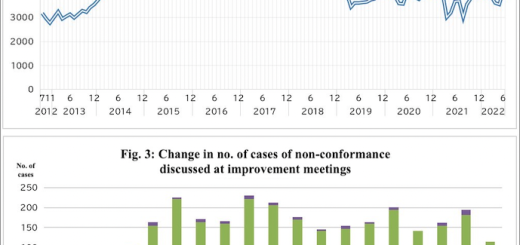Fukushima Now (27) Part 1, Troubles Continue – But Will They Manage to Complete the Decommissioning?
By Yamaguchi Yukio
I. Thirteen and a half years have passed since the unprecedented catastrophe of the Fukushima nuclear accident.
While reflecting on the deep sadness experienced by people who have lost their hometown and become displaced persons, I read the Japanese translation, released May 2024, of Visit to Japan – Report of the UN Special Rapporteur on the Human Rights of Internally Displaced Persons, Cecilia Jimenez-Damary (2023). In the report, Ms. Damary explains the nine basic rights* listed in “V. Recommendations to address human rights challenges affecting internally displaced persons from the Fukushima disaster,” and at the end provides recommendations for each of them. The content is extremely relevant in light of that disaster.
*1. Right to information; 2. Right of internally displaced persons to participate; 3. The right to remedy; 4. Right to family life; 5. Right to adequate housing; 6. Right to health; 7. Right to a clean, healthy and sustainable environment; 8. Right to livelihood; and 9. Right to education.
That the Fukushima disaster was caused by technology based on science that utilizes radioactivity is beyond doubt. Is technology capable, on the other hand, of resolving the crucial issues it causes? Is it not out of control? Which way is it headed? This is still as ambiguous as ever.
Nevertheless, Tokyo Electric Power Co. (TEPCO), the party responsible for the Fukushima disaster, is joining forces with Japan’s government and industry to restart Unit 7 (1356 MW) of the Kashiwazaki-Kariwa Nuclear Power Station in Niigata Prefecture, hoping to accomplish that this fall. All that remains, they say, is the final hurdle of getting the prefecture’s citizens to agree to it.
II. Looming large in the minds of many of Niigata Prefecture’s citizens, however, is the difficulty of evacuating and a deep distrust of TEPCO over whatever happened to those “seven promises” TEPCO made. Those concerns are impossible to eradicate. The seven promises included, “In proceeding with the decommissioning of the Fukushima Daiichi nuclear power plant (NPP), we will persevere to its final completion, while gaining the understanding of the local communities and other stakeholders,” “We will complete the decommissioning and secure the funds needed for safety measures at the Kashiwazaki-Kariwa NPP,” “Safety will not be neglected for the sake of economic efficiency,” and four other promises along those lines. These were all responses by TEPCO’s president when he was being queried by Japan’s Nuclear Regulation Authority (NRA) about TEPCO’s eligibility as a nuclear operator after they had caused the Fukushima nuclear disaster, and he was stating the company’s “basic stance as a nuclear operator” (August 2017).
TEPCO keeps saying “We will get it done,” but what would a “decommissioned” Fukushima NPP actually consist of? It is well known that no clear definition exists at this time. The work that needs to be done has not been itemized, and it may be impossible even to itemize it. Why are there so many safety-related issues at Fukushima Daiichi as it undergoes decommissioning, even though “safety” is supposedly not being neglected? Even in a period of less than one year, serious problems have arisen that cast doubt on their safety measures.
III. In March this year, a subcontractor accidentally dug up a high voltage power supply circuit cable carrying 6,900 V at the Fukushima Daiichi NPP. He suffered second degree burns as a result. Power Supply System A was shut off at the site, causing the important seismic isolation building and the ALPS treatment water-related facilities to cease functioning. Worse, the switchover to Power Supply System B, which normally would have occurred, failed. Worse yet, a gas turbine generator failure resulted in a second loss of power.
In October of last year, workers engaging in operations to dissolve carbonate solids in ALPS treatment facility pipes were exposed to radioactivity when gas generated in the course of the work elevated the pressure within a temporarily installed flexible pipe, causing it to break free and release a chemical solution containing radioactive waste. Two of the five workers involved were not wearing waterproof anoraks. They were hospitalized for radioactive contamination of the skin surface, estimated at 6.71 mSv and 1.67 mSv, respectively. Three other workers, who performed recovery efforts to clean up the leaked effluent, were also exposed. Responding to queries at a press conference, NRA Chairman Yamanaka said that TEPCO’s implementation plan for such operations had been violated (see NIT No. 219).
IV. With such stresses and strains piling up, TEPCO is destined to continue causing problems into the future. They say they will “decommission” this NPP and that they “aim to restart the Kashiwazaki-Kariwa NPP,” but won’t they ultimately have to abandon both of these efforts? Given the importance of the nine basic rights Ms. Damary has listed, it bears saying that the time has come for science and technology to move on and leave nuclear power behind.

